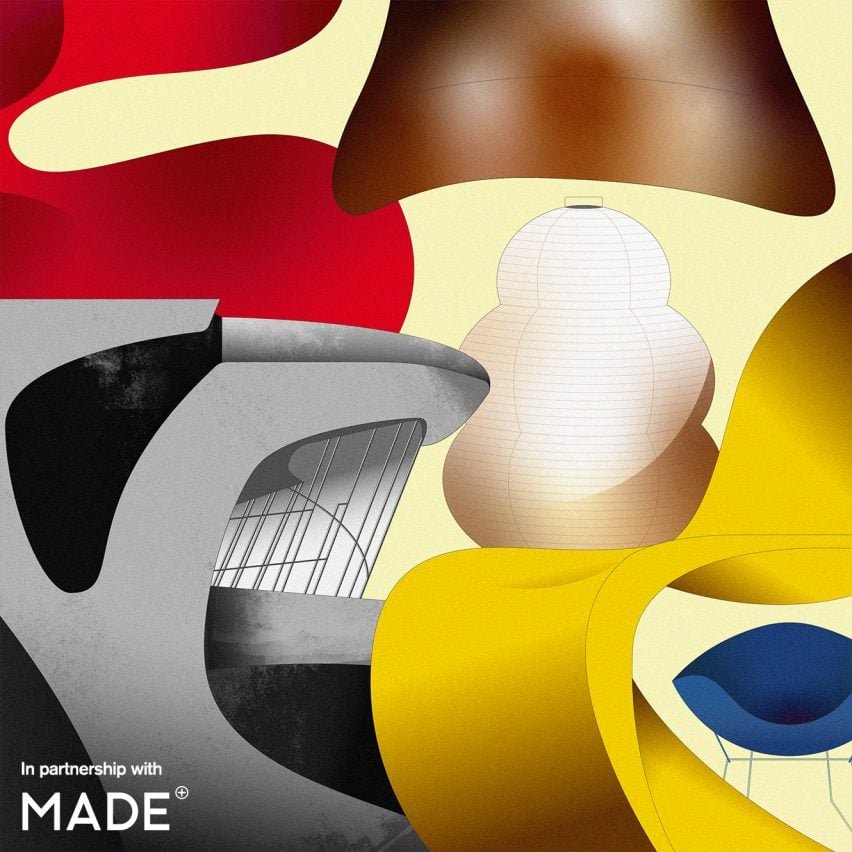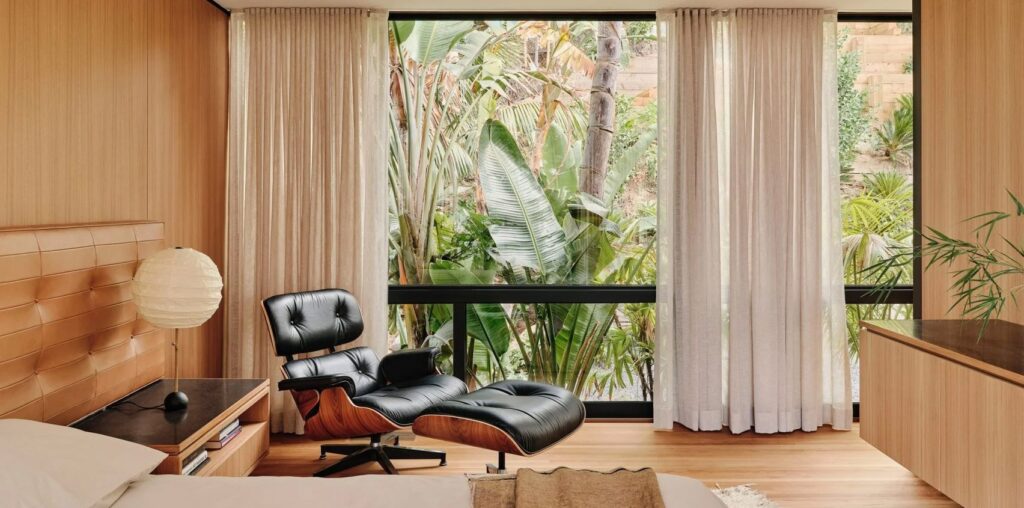Mid-century modern design may meet our needs even more now than when it first appeared, but that doesn’t mean we should idolise the style, writes John Jervis.
I love mid-century modern, but it makes me sad. In its beauty and simplicity, it speaks of postwar optimism, and a belief in a better world – one of prosperity and peace, with large homes and larger pay packets. It’s not the fault of a bunch of attractive designs that this proved to be a mirage, even a fraud. But mid-century modern was wrapped up in that delusion, even contributed to it. And the design industry enjoyed, and continues to enjoy, the ride just a little too much.
In the 1950s, mid-century modern design promised a lifestyle free from markers of wealth and privilege, free of decorative excess, of clutter and dirt, free from the past. In reality, there were few progressive ideals involved. Before the war, modernist designers had struggled to bring their ideas to mass production, but still sought to raise living standards in cities, designing ‘minimum dwellings’ with floorplans, kitchens and furnishings calculated to maximize space and improve lives.
Their postwar successors – all those heroic, big-name designers we celebrate as prophets of a modern, democratic future – turned out to be less public-spirited. When mass production of modernist designs became a reality, they chose lucrative careers working, almost exclusively, for high-end manufacturers.
Then, as now, class was deeply embedded in design’s power
And those manufacturers rarely considered, pursued or achieved affordability or accessibility, and still don’t. There may well be perfectly justifiable arguments – and realities – around balancing profitability, quality and investment, and achieving sustainability. Yet it is fair to say that most such companies have never sought a mass consumer market – the sort of market that would erode the cachet and returns of their intellectual property. Then, as now, class was deeply embedded in design’s power, even as its pioneers proclaimed the advent of a classless era.
To be fair, that worked both ways. The golden age of mid-century modern design barely stretches a couple of decades, partly because it was never that popular. Even when incomes grew, and aspirational furnishings became just about affordable, most consumers turned not to sanctioned ‘good design’, but to products with other, perhaps more important, meanings – nostalgia, craft, ornament, community, warmth.
To the despair of critics, heavy ‘baroque’ furniture remained the preferred choice of consumers during the German economic miracle, while Americans showed a similar predilection for colonial styles. In the heyday of the Italian furniture industry, many manufacturers stuck to an aesthetic decried by Domus editor Ernesto Rogers as ‘Cantu Chippendale’.
Just as tellingly, when the wider population of mid-century modern poster child Finland was finally able to afford the country’s furniture, the new ‘Tower’ suite was the immediate bestseller. Released in 1971, this three-piece sofa-armchair combo – a typology anathema in design circles – adopted a traditional ‘English style’, with comfortable upholstery and oak veneer over foam and chipboard. It turned out that imported British TV shows were more influential than lecturing from design’s great and good about a modernist canon.
In the postwar era, that great and good – a pale, male and privileged elite – secured its status rapidly, with a raft of government- and industry-backed organizations such as Britain’s Council of Industrial Design and the Industrial Designers Society of America, all dedicated to imposing universal standards of ‘good design’.
Soon, even receptive audiences – including many young designers – began to find both the discourse and the results tedious, turning to Victoriana, pop and eventually postmodernism as the 1960s progressed. Some rejected ‘design’ in its entirety, looking to alternative culture instead, epitomised by the success of the Whole Earth Catalog.
Why has mid-century modern now become the default style for contemporary interiors?
The reasons behind changes in taste are always hard to pinpoint, but in this instance, it seems many were looking for a richness, diversity, vibrancy and meaning in their lives that mid-century modern was failing to provide – an opportunity to express their personality and creativity through their home decor. So why has mid-century modern now become the default style for contemporary interiors? As with Victorian design’s comeback in the 1960s, or art deco in the 1980s and brutalism in the 2000s, such revivals are far from unusual, but it’s still curious that mid-century modern meets our needs more than during its heyday.
Some of that may be practical. As more and more of us are crammed into ever smaller homes, squeezing a spindly faux-mid-century modern desk into a bedroom is more realistic than some glorious art deco behemoth. And, as we constantly move from space to space, its lightness and modularity make perfect sense. Other reasons are less tangible, less knowable – perhaps mid-century modern offers a clarity, calm and sense of control that is hard to find in the rest of our lives.
The financial equation hasn’t changed over the decades, though. Manufacturers still have a tight grip on their ‘originals’, leaving the vast majority of us buying knock-offs, or flat-packed imitations, as we attempt to Marie Kondo our existence.
But how long will everyone want to live in these ranks of pristine waiting rooms? My aspirations for a mid-century modern bachelor pad – a Julius Shulman photo on the cheap – have long since fallen away. Leaving behind that quest for a lifestyle that never existed in the first place has improved my lot considerably. It is the (slightly mannered) accumulation of battered paperbacks in the Penguin donkey and the coffee stain on the Aalto stool that give them their charm. And their submersion in the general detritus of life gives them context and meaning.
Maybe we just don’t need another generation of Eames loungers
And there is another thing that might speed up a mid-century modern rethink. In promotional literature, its timelessness and durability have long been trumpeted as the route to a sustainable future. Perhaps this claim is no longer quite so convincing. Regenerative and circular design requires us to instead embrace age, imperfection, decay, decomposition, even odour – to view products as a passing moment in the life of a material, with longevity as a potential drawback. So maybe we just don’t need another generation of Eames loungers.
In this context, mid-century modern’s ‘timeless perfection’ can seem a cold quality, one throwing a harsh light on our own imperfections and frailties – our human nature – while overlooking our concern with and capacity for joy. The obsessive repetition of this mantra, and of outdated concepts of ‘good design’, invites the backlash that brought mid-century modern design to a shuddering halt last time round, viewed as sterile, inflexible, lifeless.
Certainly, like so many others, I will always find mid-century modern beautiful, even sublime, and I’ve got my eyes on a few more alluring examples. But I wouldn’t want too much of it in my life.
Main photography by Joe Fletcher.
John Jervis is a writer, editor, project manager and ghost writer across a range of media, including Icon, Frame, RIBA Journal, Apollo, ArtAsiaPacific, Thames & Hudson, ACC, WePresent, Laurence King and others. He has just published his first book, 50 Design Ideas You Really Need to Know, with Greenfinch Books.

Mid-century modern
This article is part of Dezeen’s mid-century modern design series, which looks at the enduring presence of mid-century modern design, profiles its most iconic architects and designers, and explores how the style is developing in the 21st century.
This series was created in partnership with Made – a UK furniture retailer that aims to bring aspirational design at affordable prices, with a goal to make every home as original as the people inside it. Elevate the everyday with collections that are made to last, available to shop now at made.com.

